|
HISTORY
Before the birth of poet François Fabié, there were no events of any great historical interest in the peaceful existence of this small village set in the province of Rouergue.
But a mystery exists in the wood "Chantecoucou". Some old stones stay from the past in a curious place, and nobody knows where do they come from. This fabled place is called "Vieux Durenque".

Topographic map of 18th: Was “Vieux Durenque” not yet existent or already extinct ?
Durenque takes its name from the pre-Celtic origin of the rivers’name (originally called the “Dure”).
The discovery of a "statue-menhir" indicates that the land was already occupied in Neolithic times and possibly before that. There was a dolmen on the territory of Durenque.
Merovingian graves were discovered in the old cemetery beside the church, and the first stones of the castle certainly date from Carolingian period.
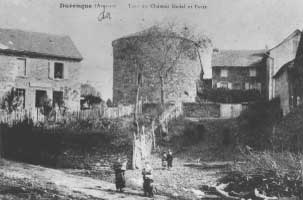 The village progressively grew around the fortified buildings in a fairly relaxed feudalism.
The village progressively grew around the fortified buildings in a fairly relaxed feudalism.
Several baronies occupied the castle from the twelfth to the seventeenth century, which was looted during a riot in 1793. A circular tower existed until the last century but a square of walls is all that remains today.
Durenque seemed to be isolated, or just on the limit of religious conflict areas (Protestant and Cathar).
It is possible the place of “Vieux Durenque” was used as a shelter for heretics hunted by plunderers and persecutors. Discovered foundations indicate the outlines of a strong building. It is also thought it may have been a refuge for villagers fleeing the plague which afflicted the area during the 14th century. The enigma remains intact...
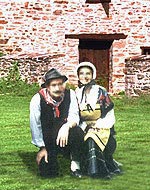
VILLAGERS
The heritage of a relatively stable past and good climate is evident today in the peaceful, rural ways of the village.
The locals are "contained" but generous and honest. They enjoy the many fetes that centre round the village throughout the year.
The villagers are completely integrated in the great family of Aveyron. So they willingly identify themselves with the church, which is the seat of a lively Sunday meeting.
PARISH
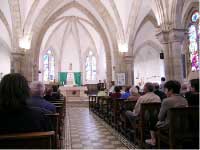 The parish of Durenque, Cannac and Lebous depends on the parish of “St Pierre de l’Alrance et du Giffou” administered by Réquista.
The parish of Durenque, Cannac and Lebous depends on the parish of “St Pierre de l’Alrance et du Giffou” administered by Réquista.
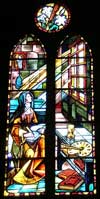
The church, dedicated to Saint Teresa, has beautiful stained glass windows depicting the Saint’s life. For this reason, it has been recognised as a basilica.
A special celebration takes place every year in October. The relics are venerated and many parishioners are involved.
Priest Michel Granier lives in the presbytery in front of the church. This house was once a residence of François Fabié and was donated to the commune. Mass is held every Sunday at 11 a.m.
SCHOOL
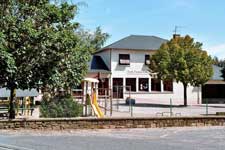 The François Fabié School opened in 1977 with two classrooms and 56 pupils. Before that, boys and girls were respectively seated in two different schools witch are obsolete today.
The François Fabié School opened in 1977 with two classrooms and 56 pupils. Before that, boys and girls were respectively seated in two different schools witch are obsolete today.
In the past, two hamlets of the commune (Le Verdier and Cannac) had their own public school. Nuns ran a private school and this building was the center of the canteen service. New premises have been built for the existing public school, and a municipal canteen is set up in a lateral part of the next hall.
In the eighties, the number of pupils increased to seventy-five and a new building was added to accommodate the increase. Currently, there are three lively classrooms in the village, but the others schools of the commune are closed.
|


 The village progressively grew around the fortified buildings in a fairly relaxed feudalism.
The village progressively grew around the fortified buildings in a fairly relaxed feudalism.
 The parish of Durenque, Cannac and Lebous depends on the parish of “St Pierre de l’Alrance et du Giffou” administered by Réquista.
The parish of Durenque, Cannac and Lebous depends on the parish of “St Pierre de l’Alrance et du Giffou” administered by Réquista.
 The François Fabié School opened in 1977 with two classrooms and 56 pupils. Before that, boys and girls were respectively seated in two different schools witch are obsolete today.
The François Fabié School opened in 1977 with two classrooms and 56 pupils. Before that, boys and girls were respectively seated in two different schools witch are obsolete today.
















